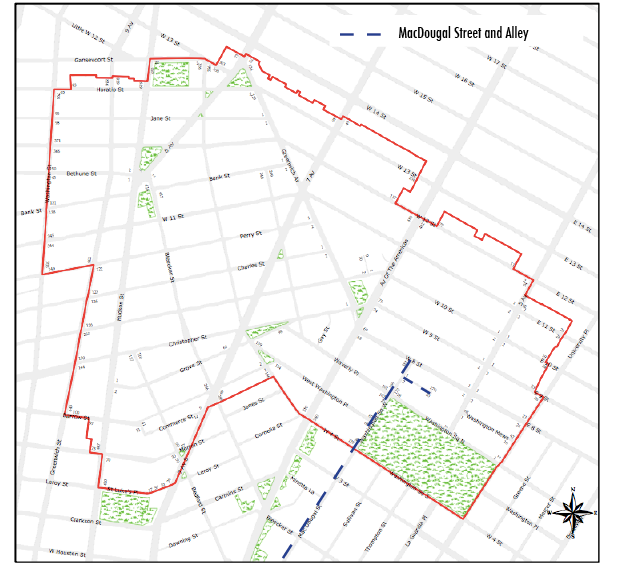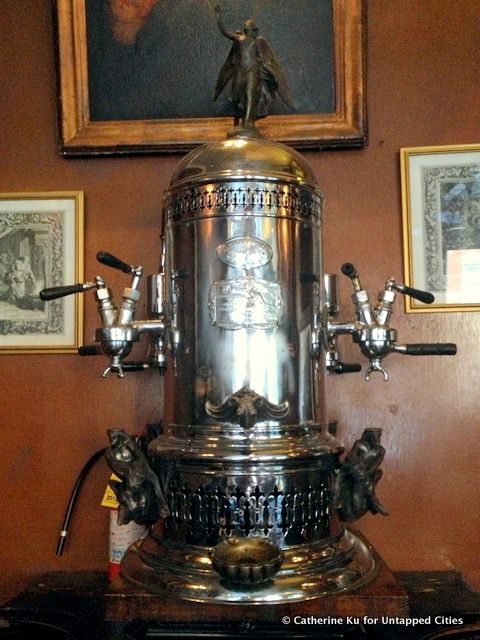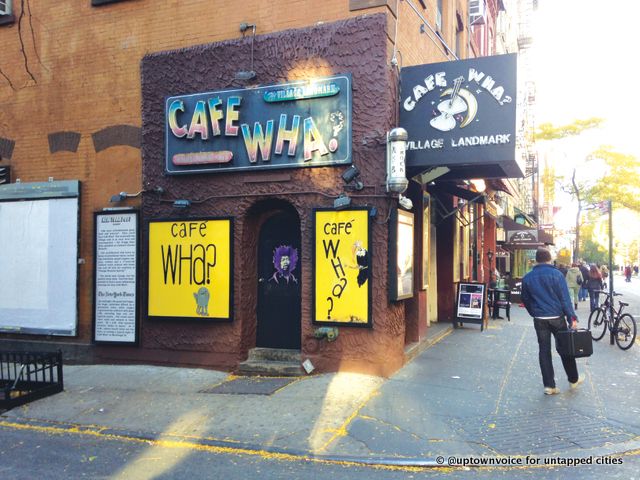Last Chance to Catch NYC's Holiday Notalgia Train
We met the voices of the NYC subway on our nostalgia ride this weekend!


From Caffe Reggio–the place that claims to have brought the cappuccino to America–to Minetta Tavern, MacDougal Street plays host to its fair share of historic institutions. It has also been home to a series of the city’s most notable residences. Eleanor Roosevelt called the street home following the death of her husband, and Jackson Pollock lived on the private MacDougal Alley. The street lies at the heart of Greenwich Village, with the lifeblood of the neighborhood ever present on this dense strip.
The charm and allure of MacDougal Street today is a maintenance of the storefronts of the latter half of the 20th century. Perhaps due in major part to the 1969 Greenwich Village Historic District Designation of the area, the street, as with much of Greenwich Village, has remained an intact homage to the artistic life and literary history of the neighborhood.

MacDougal Street highlighted within the Greenwich Village Historic District Designation (red outline) from 1969 (map via document from the Greenwich Village Society for Historic Preservation)
The street is named after Alexander McDougall (his name does indeed have a different spelling than the street). McDougall was a Scottish born representative of New York state to the Continental Congress and played a pivotal role in the founding of the Bank of New York as its first president.
Greenwich Village was one of the earliest areas Europeans settled on Manhattan. Utilized for crop production, the area was called Greenwich, and after the influx of more settlers, it was eventually called a village. Hence the historical origins of the area’s name as Greenwich Village.
The street’s most profound events occurred surrounding the Beat Generation. With commemorative plaques dotting the streets today, among the unchanged cafe and restaurant facades and interiors, the grit of the street of a bygone era is ever-present. The most storied site on the street is perhaps Caffe Reggio. Included on our list of 7 Spots in NYC Where You Can Drink Like the Beat Generation, the cafe played host to the leaders of the movement, including Kerouac and Ginsburg.

The antique espresso machine inside Caffe Reggio
Among the classical Italian Renaissance paintings (the cafe boasts a 16th century work from the school of Caravaggio), scenes in famed movies such as the Godfather II and Inside Llewyn Davis have been filmed here. In 1959 a young presidential hopeful, John F. Kennedy, made a pivotal speech set to the backdrop of the cafe.

The exterior of Cafe Wha?
Just down the street from Caffe Reggio is Cafe Wha?, another space featured on our list. With the stage graced by icons such as Jimi Hendrix and Bruce Springsteen, the spot has played host to a deep pool of musical talent. It was also home to Bob Dylan’s first NYC gig. Among the spots on MacDougal street, this was the one most often visited by Allen Ginsburg.
Located on MacDougal Street just west of Washington Square Park is Provincetown Playhouse, a theatre that opened in its current location in 1918. (It opened in 1916 down the street.) Now apart of NYU, the theatre housed many famous actors over the years, most notably Eugene O’Neil and Bette Davis.
At the intersection of MacDougal and Waverly Place lived one of the street’s most famed residents: Eleanor Roosevelt. Following the death of her husband in 1945, Roosevelt, a lifelong New Yorker, moved to the apartment she had bought in 1942.
The street is also home to Tiro E Segno, a rifle society also considered the oldest Italian-American Society in the United States. It is an outgrowth of a famed Italian society.
One of the more unique aspects of MacDougal Street is a small alley of the same name that spans half the distance from MacDougal to 5th Avenue, with access only from MacDougal. The street—south of West 8th Street and north of Waverly Place—harkens back to the days of great townhouses along the vast expanse of Washington Square North and Eighth Street in the latter half of the 19th century. The small street was officially established in 1883 to house stables for these townhouses, with the numbers of the corresponding townhouses still visible. From 1949 to 1950 Jackson Pollock lived at number 9 on the alley.
Subscribe to our newsletter